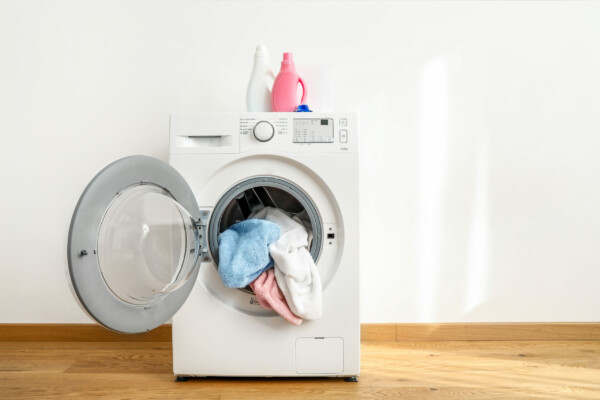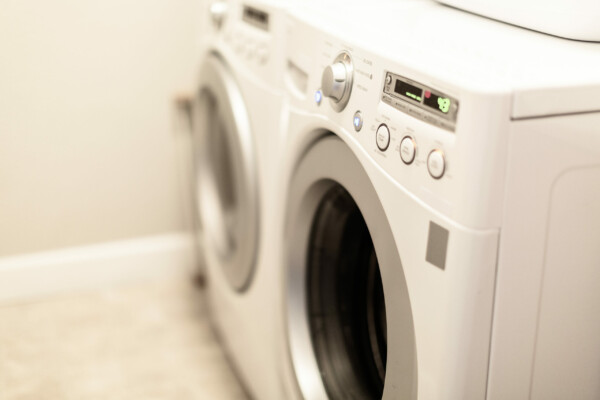Why is My Whirlpool Washer Not Draining: Troubleshooting Tips
Encountering a Whirlpool washer not draining can be a frustrating ordeal, leaving you with clothes soaked and plans derailed. Whirlpool, a household name since 1906, offers a diverse range of washing machines, from front-loaders and gas washers to high-efficiency and smart washers. Despite the advancements, the basics remain critical – a washer that doesn’t drain is a problem, regardless of its features.
Common Culprits Behind a Whirlpool Washing Machine Not Draining
When faced with a Whirlpool washing machine not draining, several suspects could be the root cause. From clogged hoses to faulty pumps, understanding these common issues can help you troubleshoot effectively.
Blocked or Kinked Drain Hose:
- Inspect and straighten the drain hose.
- Check for and clear any clogs within the drain hose.
After ensuring the drain hose for Whirlpool washer is free from kinks and clogs, it’s essential to routinely check this component as part of your regular appliance maintenance. Such preventative measures can significantly reduce the likelihood of future drainage problems, ensuring your washer operates efficiently.
Faulty Drain Pump:
- Finding abnormal noises can give you a clue about a pump issue. If your washer makes unusual sounds during the drain cycle, it could indicate that the Whirlpool washer drain pump is struggling to function properly.
- Another critical aspect to investigate is the presence of blockages that might be hindering the pump’s ability to efficiently move water out of the machine. These blockages can occur in various locations within the pump’s assembly or the connecting hoses.
Upon addressing issues related to the Whirlpool washing machine drain pump, it’s essential to know that the Whirlpool washer drain pump location is typically at the bottom of the machine, accessible for inspection and cleaning. This placement allows the pump to effectively remove water from the tub. Regularly checking for and clearing out any debris or obstructions can significantly improve your washer’s performance.
Moreover, if your Whirlpool top load washer not draining completely, it could be a sign that the drain pump is either partially blocked or failing. This incomplete draining can leave clothes wetter than expected at the end of a cycle, indicating that the pump may not be effectively removing all the water. Early detection of these signs and addressing them promptly can prevent the problem from escalating into more significant issues, ensuring the longevity and efficient operation of your washer.
Malfunctioning Door Lock and Lid Switch:
- If your Whirlpool front load washer not draining, verify if the door lock is engaging correctly.
- Ensure the lid switch is functioning and engaged for top-load washers.
After Whirlpool washer troubleshooting the door lock or lid switch, it’s a good practice to keep these areas clean and free from debris. This can help prevent future failures and ensure that your washer’s safety mechanisms are always in top condition.
Timer or Control Board Issues:
- Investigate the timer or control board for faults.
- Consider consulting a professional if these components seem to be the issue.
While some washer repairs can be straightforward, dealing with electrical components like timers and control boards may require a deeper technical understanding. If you’re unsure, seeking professional help can prevent further damage to your appliance and ensure a safe resolution to the problem.
Step-by-Step Solutions for a Whirlpool Washer Not Draining
Before calling in a professional, there are several steps you can take to potentially solve the draining problem yourself. Here’s a concise guide:
- Check the Drain Hose: It’s crucial to ensure the hose isn’t just free from kinks or blocks but also connected properly to both the washer and the drainage system. Occasionally, hoses can become loose due to the washer’s vibrations. After verifying the hose’s integrity, consider running a water flow test by pouring water into the standpipe to ensure it’s not the drain system that’s clogged.
- Inspect the Drain Pump: Beyond looking for obstructions, feel for any signs of wear or damage to the pump itself. Pumps can wear out over time, leading to inefficient operation or complete failure. If the pump is accessible, gently rotate the impeller (if visible) to ensure it’s not seized. Listening for the pump’s operation during a cycle can also provide clues; a working pump should produce a humming or buzzing sound during the drain phase.
- Examine the Door Lock or Lid Switch: Using a multimeter for continuity tests is a great start, but also visually inspect these parts for any signs of physical damage or wear. For lid switches, ensure that the actuator (the part that presses the switch when the lid is closed) isn’t broken or misaligned. For door locks, ensure the latch is fully engaging and that the door seal isn’t obstructing the lock mechanism.
- Evaluate the Control Panel: Resetting the washer can often recalibrate the system, but if this doesn’t work, try unplugging the washer for a few minutes to perform a “hard reset.” This can clear any lingering errors or glitches in the system. Additionally, look for any error codes displayed on the control panel. Many Whirlpool washers have diagnostic modes that can be accessed to run a series of tests, providing codes that correspond to specific issues which can be looked up in the user manual or online for further guidance.
This knowledge can be invaluable, saving you not just time and money on this repair but potentially on future issues as well. Remember, safety first: always disconnect your washer from the power source before attempting any repairs. If at any point you feel out of your depth, don’t hesitate to call a professional. Some issues, particularly those related to electrical components, are best handled by experienced technicians.
Tips to Prevent Future Drainage Issues
Maintaining your Whirlpool laundry machine can prevent future drainage problems. Regularly cleaning the Whirlpool washing machine filter and inspecting hoses for wear and tear can save you from unexpected issues. Here are a few maintenance tips:
- Regularly remove and clean the filter to prevent clogs.
- Straighten the drain hose to avoid kinks and ensure it’s secured properly.
- Check the Whirlpool washer clogged drain for any objects that might obstruct water flow.
- Inspect and Clean the Water Inlet Filters: Over time, the water inlet filters can become clogged with sediment and debris, which can affect the water flow into your machine. These filters are located where the hoses connect to the washing machine and can be removed and cleaned to ensure a full and consistent water supply during the wash cycle.
Keeping these filters clean can help mitigate problems before they start, leading to smoother operation and potentially extending the life of your machine.
When to Seek Professional Help
Despite your best efforts, some Whirlpool washer problems may require professional attention. If you’ve attempted the above solutions without success, or if you’re uncomfortable performing these tasks, it might be time to call in a technician. Professional repair services can offer a more thorough diagnosis and ensure your Whirlpool washer full of water is a problem of the past.
Conclusion
Troubleshooting a Whirlpool washer not draining can seem daunting, but with a bit of knowledge and effort, many issues can be resolved without professional help. From checking the Whirlpool washer drain hose replacement to inspecting the pump and switches, these steps can lead to a functioning washer. Remember, regular maintenance is key to preventing future issues, ensuring your Whirlpool washing machine continues to serve you well for years to come.
Date of page creation: March 20, 2024
Page update date: March 20, 2024
Ask a Question



